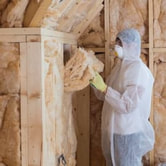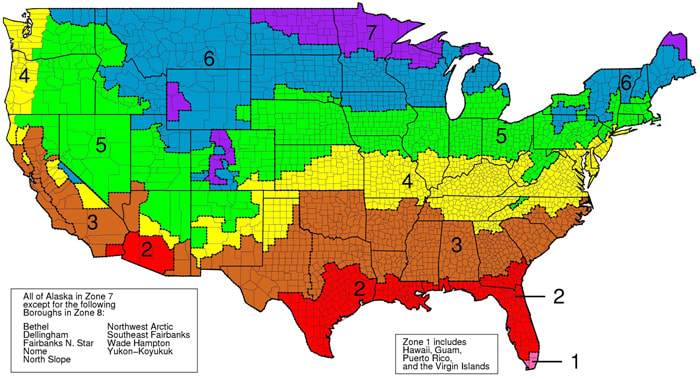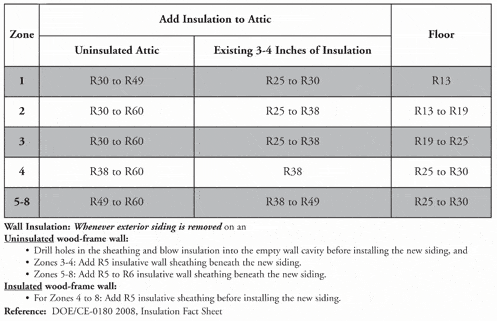Sonoma County Insulation Installed
What Does R-Value Mean?
Not all insulation materials are the same or have the same effectiveness. One way the industry measures the effectiveness of any insulation is to determine its R-Value. R-Value is short for thermal resistance or the resistance to conductive heat flow. When insulation materials are rated, the higher the listed R-Value, the greater its insulating effectiveness is.
The R-Value of any given material depends on the type of material it is made of, its density, and its thickness. The R-Value is affected by where insulation is installed and how it is installed. Consider having a professional insulation company provide and install the insulation so it is done correctly.
The correct R-Value and amount of insulation needed also depend on what climate the home is located in. Air sealing and moisture control also boost the effectiveness of insulation.
Not all insulation materials are the same or have the same effectiveness. One way the industry measures the effectiveness of any insulation is to determine its R-Value. R-Value is short for thermal resistance or the resistance to conductive heat flow. When insulation materials are rated, the higher the listed R-Value, the greater its insulating effectiveness is.
The R-Value of any given material depends on the type of material it is made of, its density, and its thickness. The R-Value is affected by where insulation is installed and how it is installed. Consider having a professional insulation company provide and install the insulation so it is done correctly.
The correct R-Value and amount of insulation needed also depend on what climate the home is located in. Air sealing and moisture control also boost the effectiveness of insulation.
Existing Homes Can Benefit from Added Insulation
An existing home that was not constructed with energy efficiency as a goal will probably benefit from added insulation. Older homes are most likely to have less insulation than newer homes.
A homeowner needs to get an energy assessment to determine if the home has sufficient insulation and where it needs insulation added. This home energy assessment will also find areas that need air sealing. Qualified home energy auditors can be hired for this task. If the homeowner wants to save that expense, they can do their own energy audit. This inspection must determine:
Other areas such as walls require more effort. Outlets are good places to check insulation. First, turn off the power to the outlet, then remove the outlet cover and use a flashlight to see the insulation in the wall around it. If no insulation is visible, the house may need a major insulation update. Check outlets on every floor and in every room with exterior walls.
When insulation is found, it should be inspected for type and thickness. The insulation should be checked for condition such as dampness, rodent damage, and compression. Once the insulation has been found and its type determined, the homeowner should go to the U.S. Department of Energy’s online fact sheet for insulation R-Values.
Then, use the Home Energy Saver tool to determine how much insulation needs to be added for maximum energy efficiency. There is also a Home Energy Saver calculator that calculates costs and rates of return for different types of insulation.
For a project this important, a homeowner should seriously consider hiring a professional insulation installation company to first assess the existing insulation conditions and then determine the insulation updates that are needed. The same company can give the homeowner a cost bid on the material and installation.
Removing damaged or wet insulation, fixing the moisture or air leak problems, and then air sealing everything before adding new insulation is not a fun job. It is dirty and time consuming for homeowners without experience or the correct tools and experience. If there has been rodent damage to insulation, how can one block rodents from returning?
Additional Home Energy Efficiency and Insulation Considerations
Ending up with a highly-energy-efficient house and saving lots of money on energy bills for heating and cooling involves more than dumping in more insulation. Weatherizing and making a home energy efficient involve more than insulation. A home weatherizing and insulation project should also involve the following projects.
Once the leaks are all remedied and insulation is added, there must be proper ventilation in the home. Ventilation strategies include natural ventilation, whole-house ventilation, and spot ventilation. Natural ventilation can include periodic opening of windows and doors, but natural ventilation can be unpredictable and hard to control.
Spot ventilation can add to natural ventilation by removing indoor air pollution and moisture where it occurs with exhaust fans.
Whole-house ventilation provides better all-around air quality and uniform ventilation for the whole house. This type of system uses fans and duct systems to get rid of stale air and supply fresh air to the home.
The energy-efficient home depends on a combination of air sealing, adequate insulation, and a good ventilation system to keep the whole house cool in the summer, warm in the winter, and comfortable all year round with the least use of energy. The goal is to cut energy costs and give the family a comfortable home to live in the year round.
Existing Homes Can Benefit from Added Insulation
An existing home that was not constructed with energy efficiency as a goal will probably benefit from added insulation. Older homes are most likely to have less insulation than newer homes.
A homeowner needs to get an energy assessment to determine if the home has sufficient insulation and where it needs insulation added. This home energy assessment will also find areas that need air sealing. Qualified home energy auditors can be hired for this task. If the homeowner wants to save that expense, they can do their own energy audit. This inspection must determine:
- The places in the home that are not properly insulated. This can include, under roofs, in attics, under floors, and inside walls. Are exposed pipes and ducts insulated?
- What type of insulation was used and the amount and condition it is in. Does the insulation have water damage? Are there rodents living and defecating in it?
- The R-Value of the insulation and how thick or deep it is in different areas of the home.
Other areas such as walls require more effort. Outlets are good places to check insulation. First, turn off the power to the outlet, then remove the outlet cover and use a flashlight to see the insulation in the wall around it. If no insulation is visible, the house may need a major insulation update. Check outlets on every floor and in every room with exterior walls.
When insulation is found, it should be inspected for type and thickness. The insulation should be checked for condition such as dampness, rodent damage, and compression. Once the insulation has been found and its type determined, the homeowner should go to the U.S. Department of Energy’s online fact sheet for insulation R-Values.
Then, use the Home Energy Saver tool to determine how much insulation needs to be added for maximum energy efficiency. There is also a Home Energy Saver calculator that calculates costs and rates of return for different types of insulation.
For a project this important, a homeowner should seriously consider hiring a professional insulation installation company to first assess the existing insulation conditions and then determine the insulation updates that are needed. The same company can give the homeowner a cost bid on the material and installation.
Removing damaged or wet insulation, fixing the moisture or air leak problems, and then air sealing everything before adding new insulation is not a fun job. It is dirty and time consuming for homeowners without experience or the correct tools and experience. If there has been rodent damage to insulation, how can one block rodents from returning?
Additional Home Energy Efficiency and Insulation Considerations
Ending up with a highly-energy-efficient house and saving lots of money on energy bills for heating and cooling involves more than dumping in more insulation. Weatherizing and making a home energy efficient involve more than insulation. A home weatherizing and insulation project should also involve the following projects.
- Start with a home energy audit to know where to add insulation and where to air seal the home.
- Air sealing a home can be time consuming. It involves tasks such as caulking around doors and windows, plumbing, electrical wiring, and anywhere air is leaking into the house.
- Finding and sealing air leaks on the ceiling or floor where they meet the walls, around fireplace flues or chimneys, kitchen exhaust, water heater vents, and other places.
- If windows are old, damaged, or single pane, they may need to be replaced with more energy efficient double pane windows or storm windows added for the winter months.
- The thresholds of all doors should be checked and replaced as needed with ones that have pliable sealing gaskets.
Once the leaks are all remedied and insulation is added, there must be proper ventilation in the home. Ventilation strategies include natural ventilation, whole-house ventilation, and spot ventilation. Natural ventilation can include periodic opening of windows and doors, but natural ventilation can be unpredictable and hard to control.
Spot ventilation can add to natural ventilation by removing indoor air pollution and moisture where it occurs with exhaust fans.
Whole-house ventilation provides better all-around air quality and uniform ventilation for the whole house. This type of system uses fans and duct systems to get rid of stale air and supply fresh air to the home.
The energy-efficient home depends on a combination of air sealing, adequate insulation, and a good ventilation system to keep the whole house cool in the summer, warm in the winter, and comfortable all year round with the least use of energy. The goal is to cut energy costs and give the family a comfortable home to live in the year round.
We Service the majorty of the North Bay
We cover a wide footprint when it comes to our insulation service. No job is too small or too large for our professionals. Visit our contact page for our servicing territories Contact Us
Call Today
707-285-9952
707-285-9952
|
Company
Sonoma Insulation Company* *Air Duct & Insulation Solutions. Licensed Bonded and Insured |
Social |
|
2901 Cleveland Ave #204, Santa Rosa CA 95403*
*This location is not open to the public. We are a service based business. We come to your location. |
Hours
Monday-Friday 8am-5pm Saturday-Sunday Closed |



